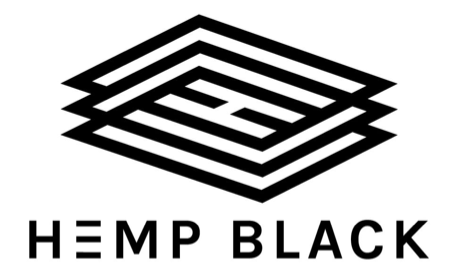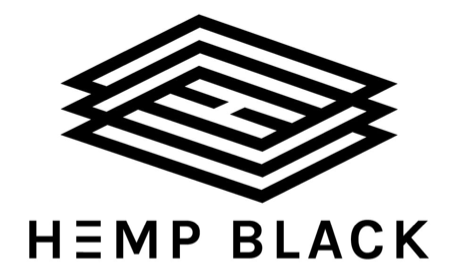What is Hemp Black fusion / TECHNOLOGY?

The Hemp Black fusion line introduces two innovative textile technologies into one product. The fusion / FACE MASK combines the technologies of Cupron antimicrobial material and our odor neutralizing HEMP BLACKTM / element yarn, both strategically integrated for maximum benefits. By using these specific technologies in our face mask, we offer a solution to Mask Fatigue and our best defense at slowing the spread of Covid-19.
Why copper on the outside of the Mask?
To understand the importance of copper technology, one must first recognize the importance of fomites and vectors. A vector is an agent or organism that transmits a pathogen, i.e. a virus or bacteria, to a host, i.e. a person. For example, mosquitos are vectors of malaria, deer ticks are vectors of Lyme disease, and humans are vectors of countless viruses and bacterial infections. Fomites, however, are inanimate objects that can transmit disease. Easy examples of fomites include doorknobs and drinking fountains. The doorknob itself is not a fomite until someone contaminates it by touching, breathing, or coughing on it. Any object or surface that becomes contaminated with a pathogen is now considered a fomite in that it may serve as a vector, transmitting a pathogen to another host and resulting in a new infection. A contaminated mask can become a fomite, increasing one’s infection risk when they touch their mask or put it on and off.
Many pathogens, including the novel coronavirus, SARS-CoV-2, can be transmitted by fomites. This is why grocery stores are disinfecting carts between uses, why you may be decontaminating your packages with disinfectant wipes, and why everyone is sanitizing their hands after touching any surface these days. While we have learned that the coronavirus is transmitted mostly through direct human contact, fomites still serve as a mode of viral transmission. But different surfaces are more or less susceptible to becoming fomites. For example, a recent study published in the New England Journal of Medicine demonstrated that the SARS-CoV-2 is most stable on plastic and stainless steel. That same study concluded that copper successfully inactivated the new coronavirus. When a surface kills a virus, it is no longer a fomite and therefore not a vector of disease.

Humans have known about the antimicrobial properties of copper for centuries, perhaps even millennia. According to the Smithsonian, copper was recognized as a disinfectant in Smith’s Papyrus, history’s oldest medical text dating back to 1500 B.C. Modern medicine confirms ancient history with 21st century research: A four-year long investigation by the Department of Defense concluded that copper materials reduced hospital acquired infection rates by 58% compared to standard hospital disinfecting protocols. A follow-up study supported these findings, in which copper bedrails were 81% cleaner than their plastic counterparts. And because of the copper’s unique mechanism of action in killing viruses and bacteria, this does not allow pathogens to mutate, creating drug-resistant bacteria or “superbugs,” which are deemed an “increasingly serious threat to global public health,” by the World Health Organization’s largest threat to public health. Most importantly, perhaps, is the fact that copper’s disinfectant properties never deteriorate, so the protection persists over time.
Getting antimicrobial protection from copper in a mask is not that simple, though. Pathogens have to actually come into contact with copper in order for the metal to kill it, and viral particles are incredibly small. Cupron’s technology, however, infuses copper into the fibers, allowing increased opportunity for contact between the pathogen and the metal, resulting in kill. Cupron has gone through rigorous scientific evaluation and is registered with the EPA. It is also recognized as an “infection control product to know” by Becker’s Hospital Review. According to Dr. Michael Schmidt, Ph.D., a microbiologist and immunology researcher who co-authored two of the previously mentioned studies, other copper masks may “just be bad copycats of Cupron’s mask.”
Why HEMP BLACKTM / element on the inside of the mask?
HEMP BLACKTM / element is a strategically engineered fiber that introduces full spectrum hemp flower extract, into the garment. This is structurally different than other materials that have recently emerged in the hemp oil space in a significant way. Those garments are essentially coated with a layer of hemp extract, which allows the oil to easily deteriorate and wash off. Similar to Cupron, Hemp Black’s technology embeds hemp flower extract into the DNA of the fiber. This means that the hemp extract will not wear off or wash out. The coronavirus crisis surprised the world, and careful research and necessary registrations cannot keep up with the breakneck pace of the pandemic. We have multiple patents pending and are currently pursuing several registrations, but we accelerated production of our materials in response to an urgent global need. While we continue to evaluate the benefits of our Hemp Black fiber, preliminary research is quite promising that our technology can offer a solution to the most common mask complaints.
 “Maskne,” “mask breath,” “face chafe” and more are terms that have become all too familiar for many in our new normal. While these mask-related consequences, lumped together known as “mask fatigue,” are certainly not the worst problem caused by the coronavirus pandemic, they are understandably unpleasant. We don’t just care about you looking your best for Zoom calls, though. We believe that preventing frustrations with face coverings will increase everyone’s willingness to wear one, an important part of the strategy to control this pandemic, save lives, and help us all return to normal life. “Maskne” refers to blemishes caused by prolonged mask wearing. We asked an external laboratory in Silicon Valley to evaluate the effects of our hemp extract on P. acnes, a bacteria responsible for causing breakouts. Their research revealed that the hemp flower extract in HEMP BLACKTM / element kills P. acnes bacteria by more than 99%. In fact, the scientists were unable to recover any evidence of P. acnes growth at 6 hours and 24 hours after treating the bacterial culture with our extract.
“Maskne,” “mask breath,” “face chafe” and more are terms that have become all too familiar for many in our new normal. While these mask-related consequences, lumped together known as “mask fatigue,” are certainly not the worst problem caused by the coronavirus pandemic, they are understandably unpleasant. We don’t just care about you looking your best for Zoom calls, though. We believe that preventing frustrations with face coverings will increase everyone’s willingness to wear one, an important part of the strategy to control this pandemic, save lives, and help us all return to normal life. “Maskne” refers to blemishes caused by prolonged mask wearing. We asked an external laboratory in Silicon Valley to evaluate the effects of our hemp extract on P. acnes, a bacteria responsible for causing breakouts. Their research revealed that the hemp flower extract in HEMP BLACKTM / element kills P. acnes bacteria by more than 99%. In fact, the scientists were unable to recover any evidence of P. acnes growth at 6 hours and 24 hours after treating the bacterial culture with our extract.
“Mask breath” is another common mask-associated complaint. Human mouths are prime breeding ground for bacteria. For example, up to 94% of healthy adults carry some form of Staphylococcus in their mouths. When we exhale, we inevitably blow some of that bacteria onto our masks, which are inescapably hot and moist from our breath, presenting an ideal environment for bacterial growth and, frankly, a lingering stench. Not only does your mask smell foul now, but when you subsequently inhale, that fetid air travels right back up into your nostrils. HEMP BLACKTM / element can help keep your mask fresh by neutralizing odors. External laboratory tests evaluated the effects of our extract on even more bacteria, including Staphylococcus and Streptococcus, two types of bacteria that commonly thrive in our mouths. Again, a third-party laboratory demonstrated that our extract killed over 99% of the bacteria. This level of kill will keep your mask, and your nostrils, free of noxious mask breath.
“Face chafe” and contact dermatitis can occur from prolonged mask wearing as well. Both conditions are caused by contact with an irritant, and result in inflamed, itchy, reddened skin. These common conditions typically occur in other places on the body, such as the thighs and arms, that are nonetheless easier to conceal than the face. The physical discomfort and its visual manifestation may leave some to forgo masks. Additionally, skin breakdown caused by these processes leaves skin more vulnerable to infection. We know that hemp extract’s components have anti-inflammatory mechanisms which may alleviate these complaints when used in a serum or lotion, but a cleaner mask can help prevent them from developing in the first place. Lastly, both staphylococcus and streptococcus also colonize the skin. This colonization is harmless on healthy skin, but it can lead to infection when introduced to open wounds.
Other odor neutralizing materials, such as commonly used silver, do so at a cost. Silver can cause skin irritation, inflammation and cell damage. Additionally, laundering allows silver to easily leach out of textiles and into our land and water, compromising soil and threatening aquatic life. HEMP BLACKTM / element does not pose these risks and offers a safe, sustainable material with a reduced carbon footprint.
One more important variable to HEMP BLACKTM / element’s technology is the aforementioned global health issue of antimicrobial resistance. We asked the same external lab to evaluate whether or not bacteria could become resistant to our extract. They answered this question by performing something called a serial passage on MRSA, an already resistant strain of staphylococcus. Their 21 day trial concluded that our extract does not contribute to antimicrobial resistance.
Wearing a mask in public spaces is required in some states and strongly encouraged in others. It is undeniably a key component in keeping our communities healthy and reducing the spread of coronavirus by up to 75%. We aim to make the choice to wear masks an easy one by improving their disinfectant power and reducing their negative consequences.
Written by Dr. Alex Capano, DNP, CRNP, FNP-BC, Chief Science Officer at Ecofibre


